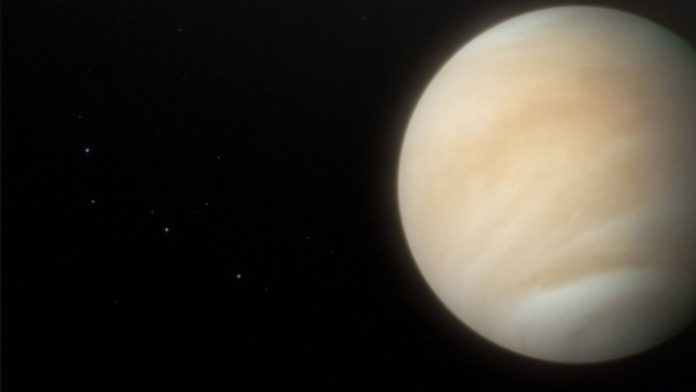Researchers had been hopeful that requirements for life could have existed on Venus earlier in the solar system’s history, before a runaway greenhouse effect caused the planet’s atmosphere to become incredibly dense and hot.
Previous studies suggested that early Venus was once warm and wet based on the chemistry of its atmosphere and the presence of highlands. These highlands were thought to be formed of granitic rock, like Earth’s continents, which required oceans of water to form.
Scientists at the Lunar and Planetary Institute (LPI), including undergraduate student intern Frank Wroblewski from Northland College, find that a volcanic flow on Venus’ Ovda Regio highlands plateau is composed of basaltic lava, calling into question the idea that the planet might once have been Earth-like with an ancient ocean of liquid water.
The LPI team re-mapped the Ovda Fluctus lava flow using radar data. They discovered that the flow is not granitic as was expected from its location, but is more likely made up of basalt rock which can form with or without water. The result has potentially significant implications for the evolutionary history of Venus. The new map and results are published in the Journal of Geophysical Research: Planets.
“We know so little about Venus’ surface,” says team member Dr. Allan Treiman, a scientist at the LPI. “If the Ovda Regio highlands are made of basaltic rock as is most of Venus, they were likely squeezed up to their current heights by internal forces, possibly like mountains which result from plate tectonics on Earth.”















